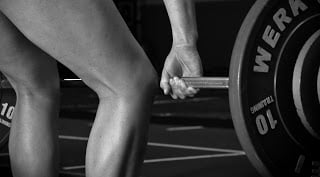
There is a lot of information available about your hamstrings; the slab of meat on the back of your thighs that has been implicated in everything from improving your sprint speed to being a major player in the prevention of ACL injuries. But how can one group of muscles have such a vast array of benefits? The answer: they recycle energy.
The “hamstrings” are the three muscles on the back of your thigh, which both extend the hip and bend the knee. This dual joint action serves as the definition of a biarticular muscle, which crosses 2 joints rather than just one. One of the major attributes of biarticular muscles is to transfer mechanical power, or energy, between joints. This energy transfer, or recycling, is especially important in exerting large forces quickly. For example during sprinting or jumping, when the hamstring contracts, your knee bends, which transfers energy to extend and straighten the hip.
This energy recycling can simultaneously explain both the ACL prevention and performance benefits of strong hamstrings. Most preventable ACL injuries occur upon ground contact or twisting of the knee while the foot is fixed on the ground. Thankfully, the hamstrings act as shock absorbers, transferring the energy of landing from your knee to your hip. Add to this ability the hamstrings’ role of controlling knee rotation, and you have got yourself a solid Kevlar vest for the knee joint. From a performance standpoint, the hamstrings also fuel propulsion, both vertically and horizontally. So when your knee bends to load your quadriceps, the muscles on the front of your leg, the hamstrings recycle that energy back to your hip to fuel the extension, or straightening of the legs like a rocket ship.
The most efficient way to train your hamstrings is intensity; these are fast twitch fibers that need high speeds and/or heavy weights. Squats and sprinting lie at the top of this menu, but other exercise can be very supportive. One of the main assistance exercises we use is a slideboard curl, which targets both hip extension and knee flexion, or bending. Athletes lie on their back and bring the heels toward the butt. It helps having your heels on a slippery surface like a slideboard, but it can also be done with a towel on a clean floor.
However, squats and sprints also teach the “skill” of energy transfer, not just improve the sheer strength of the hamstring muscles. Since everything is a skill, these 2 exercise options should be Rule #1 to improve performance and reduce injury. If you cannot do either of these activities, your main goal of leg curls should be to progress to being able to do the Rule #1 exercises.